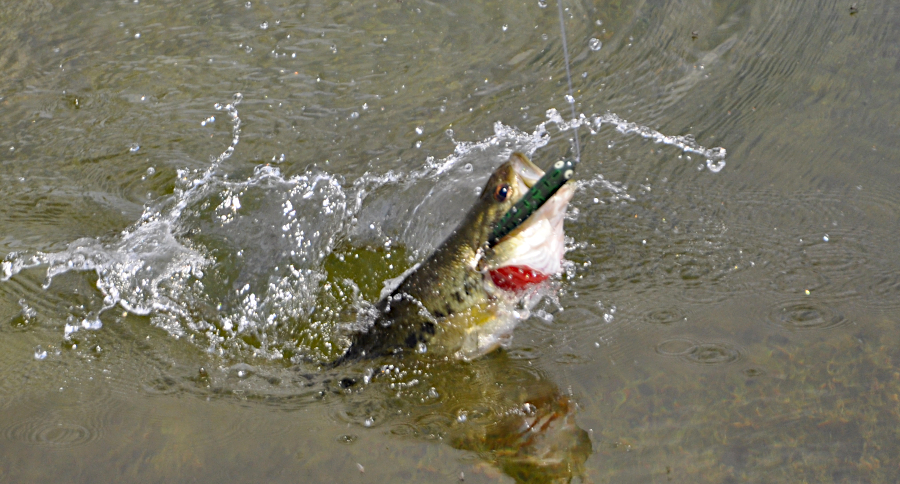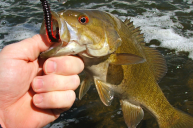Here are our best bass fishing tips for spring.
It finally feels like the winter is coming to an end. Thankfully, it wasn't nearly as bad as was predicted.
Spring means it's almost time to go bass fishing again. With the spawn rapidly approaching, that means the potential for trophy bass is especially high.
We've got some tips that will help you find bass and hook up with some real giants this spring.
Read on to find out our best bass fishing tips for the spring months.
Bass Behavior in Spring
Most bass species, especially the largemouth bass, are much more lethargic during the winter months. They're a warm water species and, much like myself, their metabolism goes down once it gets too cold. That's why it's often so hard to catch bass during the winter.
Smallmouth bass seem a little more accepting of cold weather, so you might get faster action by targeting them first.
In the late winter and early spring, the movements of most fish are going to be predicated on the weather and water temperatures. The warmer it gets, the shallower they'll start moving and feeding in preparation for spawning.
Keep an eye on parts of the lake that are receiving the most sunshine or areas where warm water is discharging into a larger body.
There are some regional variations on when bass begin spawning, which is why most people go by water temperature. Most areas start to see pre-spawn behavior when the temperature hits around 50 degrees. This is usually when the bass start to get active and gorge on minnows, shiners, shad, crayfish and any other fatty foods they can find.
As the cold water gradually warms, the males move into the shallows first. The females will move up a little later when the temperature hits around 55-60 degrees.
The female fish are full of eggs this time of year and will usually be at their heaviest weights. For the bass angler looking for the lunker of a lifetime, the pre-spawn is a great time to be out.
The ideal time to catch big fish in pre-spawn will vary by region. In Texas, the best time to catch a big bass may be February or March. Here in Michigan, it's more likely to be April or May.
While bass feed heavily on baitfish during the pre-spawn, they don't usually eat during the act of spawning. Bass fishermen can still catch them, of course. They will fiercely guard their nests and fry from bluegills and other fish that like to feed on the baby fish.
That means if you drop a bass lure in the middle of their nest, they are likely to notice it and attack it. These fish are often extremely shallow, which means you can sight-fish them, making your usual fishing trip even more exciting.
Bass Lures for Spring
One great thing about spring bass fishing is the plethora of different lures that are effective. One of the best beginner bass fishing tips I can give is to fish the early spring. It gives you the chance to try out and likely be successful with a variety of lures in your tackle box.
Just remember that you should start your presentations slow and gradually pick faster lures as things continue to warm up. For instance, in the earliest part of spring you might start with a drop shot rig to catch those larger female fish that are still suspended in deep water. As it warms, start looking to things like Rapala suspending jerkbaits and crankbaits.
I personally really like the Rebel crawfish crankbait for when the bass are in that pre-spawn mode. It looks just like a natural prey item and it has a great wobble that's hard for bass to resist when they're looking for protein prior to spawning. Jigs and tube baits are also great for mimicking crayfish.
Pay attention to what the fish seem to be feeding on in your area. If they're into sunfish, try a spinnerbait with silver or firetiger colors. If they're chowing down on shiners, a swimbait or crankbait in natural colors will likely be more effective.
If you're just not getting bites on these other lures, a soft plastic worm or senko is a good search bait. Start with the shallows and gradually work deeper. Eventually you'll likely get some strikes and some clue where the fish are holding.
As the fish move into the shallows, you can sometimes work topwater stickbaits or poppers into the mix. Throw one right over a bass bed and they'll often get agitated with this intruder and try to kill it.
Remember, when the fish are on their beds, they're not trying to feed as much as they are just removing potential threats. That's why they'll snap up your jig if you put it in the right spot.
Bass Fishing Techniques for Spring
I already touched on some lures to use and why they're effective, but let's dive into tactics a bit more. As I already mentioned, pre-spawn fish are going to be feeding heavily and your best bet is "matching the hatch" as many trout anglers like to say. Bass like to target fatty foods that will give them the energy they need to get through spawning without feeding.
You might start with lighter and slower presentations when the water is still below that 50-degree mark. As the water warms, you can ditch those finesse techniques in favor of being more aggressive. This is when you can really start working those crankbaits and jerkbaits to mimic wounded prey. That type of presentation taps into both the instincts of a bass to kill and their desire to feed.
One thing you need to buy for spring fishing is a good pair of polarized sunglasses. These cut down on the glare and allow you to spot and target specific fish. It's a good way to catch a true trophy fish.
Not only is sight fishing exciting, but you can watch the reactions of the fish in real time. Sometimes I change lures two or three times before I find the one that bass just can't stand on its bed.
Think about natural predators that like to target bass fry and eggs here. Bluegills are a great thing to mimic in their presentation because they like to raid bass nests. Bass will instinctively want to drive them away.
The one difficult thing about fishing on beds is avoiding catching the smaller male. The male will always be more aggressive. Catching him first can sometimes cause the older, wiser and larger females to develop a case of lock jaw. That's why polarized glasses are so important in spotting and targeting specific fish!
Sometimes you'll come across a stubborn bass on a bed that just won't bite. If the fish is especially large, don't give up! That big bass may ignore your lure in its bed over and over, but we promise you it is getting agitated.
After a while, they won't be able to stand it anymore and they'll strike out of pure frustration. This tactic requires some patience, but it's worth it for a big fish.
Pond Bass Fishing Tips and Techniques
I want to talk about fishing ponds and other small bodies of water here because in my experience, spring is the best time of year to fish these smaller bodies of water.
Ponds and smaller lakes usually warm up a lot faster and may offer action earlier than the big waters. You can use a small boat or kayak, but I think bank fishing is your best bet here.
Unless the water is rarely fished, scale down the size of your lures slightly. I've found smaller presentations help spur bites in more heavily fished waters.
Again, make sure you have a good pair of polarized glasses because sight fishing small bodies of water can make for some awesome action.
One thing I don't see enough anglers talk about is stealth. Remember that the eyes and mouth of a bass are designed to direct upwards. It is very easy for them to get spooked when they see an angler standing on the bank.
That's why I like to crouch down and very slowly sneak up on the bank. Move slowly and deliberately. The sound of your footsteps will echo through the bank and down into the water where it will carry. That's why it's so easy to spook bass in ponds, especially when they're on their beds.
Once you find a bed, back off and cast to it, without standing or wading too close. At my old house, I had a pond that was small enough I could cast completely across it. One of my favorite things to do was to cast a jig or other weedless lure onto the grassy bank. Then, I would ease it into the water and onto the bed of the fish. This worked well for enticing bites out of spooky fish.
Speaking of weedless lures, many ponds and small waters are often overgrown. Shallow diving lures, spinnerbaits and other baits that won't get snagged as often are a necessity.
Also consider water clarity. Focus more on baits that give off good vibration or flash for muddy waters. For clear waters, go with something more subdued like white or chartreuse to mimic baitfish.
Spring Time is Trophy Time
Spring is a great time to be angling for many game fish species, but bass fishing is our favorite. This is the best time of year to catch the trophy fish of a lifetime. With a mild winter this year, it means the fishing will be heating up sooner rather than later. So, make sure to start planning your fishing trips now.
By utilizing the tips we've given you here, you'll be sure to make this spring a season of fishing to remember for years to come. Now get out there and catch a lunker!
For more outdoor content from Travis Smola, be sure to follow him on Twitter and check out his YouTube channel.
NEXT: EVERY BASS SPECIES YOU CAN CATCH IN NORTH AMERICA
WATCH




